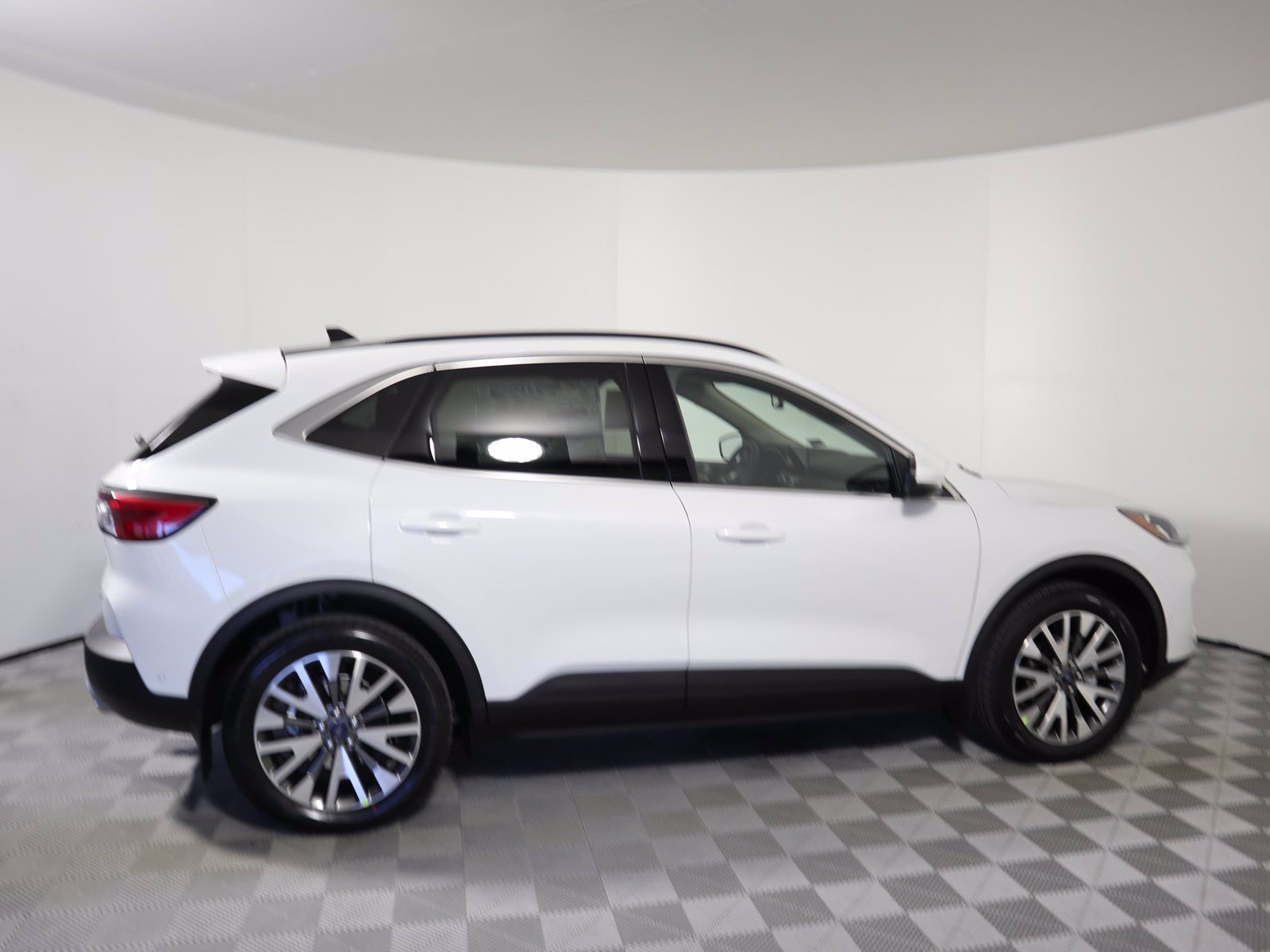
Also annoying are the door panels molded out of a sort of squishy foam-like plastic, and rigid sun visors that impede too much of the view forward when in use. Many of the materials look and feel cheaper than those in rival crossovers, and we found in a test vehicle that a few trim pieces didn't fit correctly. Still, we have some complaints about the new Escape’s interior detailing. That hasn't been the case with every Ford with Sync 3 we've tested, so perhaps this is an indication of inconsistency. The main touchscreen is large and prominently displayed, but in at least one Escape test vehicle, we found the Sync 3 system to be remarkable slow and lethargic to respond to our inputs. There’s also an available 6-inch head-up display that unfolds from the top of the dashboard to put relevant information directly in the driver’s line of sight. The cluster is configurable, and it offers a different visual representation for each available drive mode - Normal, Sport, Eco, Slippery, and Snow and Sand. We like the available 12.3-inch digital instrument cluster, in part because it offers more than just a replication of traditional gauges and dials. It has some fancy and eye-catching optional technology to help set it apart from its competitors.

What's the Escape's interior and in-car technology like?įord revamped the Escape's interior for this 2020 redesign, and it strongly resembles the all-new Ford Focus sold in other global markets (the two share a common platform). The other two turbocharged gas-only engine options carryover with updates for 2020. Ford is targeting about 30 miles of pure electric range with the plug-in. All the dimensions are more favorable for utility and driving dynamics - it's longer, lower and wider - but Ford still wanted to keep the light off-roading ruggedness intact.Īn Escape Hybrid is once again available, but it’ll joined next year by a plug-in hybrid as well. Its purpose as a compact crossover has not changed, but Ford decided to shake things up from a styling and powertrain perspective. The Escape went through a clean-sheet redesign for 2020. In general, it's well worth a test drive, we its interior quality and space aren't as strong as top rivals from Toyota, Honda and Mazda (among others). It's also more efficient, especially the Escape Hybrid, which returns to the line-up after taking a generation off. Indeed, while it provides the elevated feel and seating position of a crossover its driving dynamics are a bit more plucky and entertaining than many other similarly sized utes.Īt the same time, the 2020 Escape offers more passenger space, improved comfort and extra technology (including standard safety tech), allowing it to better align with top competitors. Despite being slightly bigger than the Escape it replaces, the 2020 model drives more like a car than ever before, reminding us - in a good way - of a Ford Focus with increased ground clearance. It's now being built on Ford's new modular architecture, and is the first vehicle riding on it to come to the United States. The first offering from the Ford brand is likely to tug it out in the SUV segment.The new 2020 Ford Escape takes a huge step forward in the competitive compact crossover market with a new platform, styling and powertrains. The Ford brand is well-known for its Ford EcoSport 2050, Ford Fiesta Hatchback, Ford Focus, Ford Mondeo, Ford Mustang 2024 cars majorly. The two also aim to work on a small electric vehicle along with other exchanges of technologies and components.The Ford brand has decided to add to a prospective buyer’s choices by entering the Indian market. The brand has also recently started a partnership with India's homegrown automotive manufacturer Mahindra & Mahindra to co-develop a new mid-size SUV for the Indian market.


Currently, Ford has 376 sales and service outlets in 209 cities across India. Ford models like the current Figo, new Aspire and the EcoSport are exported from India to over 40 global markets.įord has recently shifted focus on providing high-satisfaction customer-service, particularly in terms of after-sales offerings. Ford's facilities in Chennai, Tamil Nadu and Sanand, Gujarat have a combined manufacturing capacity of 6.1 lakh engines and 4.4 lakh vehicles. These facilities not only produce engines and vehicles for the domestic market, but for various export markets as well. Ford entered India back in 1995 and has since invested billions of US dollars to setup manufacturing facilities and a network of sales and service centres for new and existing customers across the country.


 0 kommentar(er)
0 kommentar(er)
